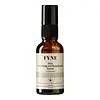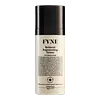What's inside
What's inside
 Key Ingredients
Key Ingredients

 Benefits
Benefits

 Concerns
Concerns

 Ingredients Side-by-side
Ingredients Side-by-side

Water
Skin ConditioningGluconolactone
Skin ConditioningPanthenol
Skin ConditioningBetaine
HumectantButylene Glycol
HumectantGlycerin
HumectantTranexamic Acid
AstringentMethylpropanediol
SolventAmmonium Acryloyldimethyltaurate/Vp Copolymer
Centella Asiatica Extract
CleansingAllantoin
Skin ConditioningSodium Hyaluronate
HumectantBiosaccharide Gum-1
HumectantPhenoxyethanol
PreservativeSodium Hydroxide
BufferingChlorphenesin
AntimicrobialSalicylic Acid
MaskingTetrasodium EDTA
Water, Gluconolactone, Panthenol, Betaine, Butylene Glycol, Glycerin, Tranexamic Acid, Methylpropanediol, Ammonium Acryloyldimethyltaurate/Vp Copolymer, Centella Asiatica Extract, Allantoin, Sodium Hyaluronate, Biosaccharide Gum-1, Phenoxyethanol, Sodium Hydroxide, Chlorphenesin, Salicylic Acid, Tetrasodium EDTA
Water
Skin ConditioningCaprylic/Capric Triglyceride
MaskingNiacinamide
SmoothingGlycerin
HumectantButylene Glycol
HumectantHydroxypropyl Cyclodextrin
MaskingPropylene Glycol
HumectantAcetyl Glucosamine
Skin ConditioningCentella Asiatica Extract
CleansingTranexamic Acid
AstringentPanthenol
Skin ConditioningAloe Barbadensis Leaf Juice
Skin ConditioningCamellia Sinensis Leaf Extract
AntimicrobialDimethyl Isosorbide
SolventRetinol
Skin ConditioningPhenoxyethanol
PreservativeHydroxypinacolone Retinoate
Skin ConditioningCetearyl Alcohol
EmollientChlorphenesin
AntimicrobialMethylpropanediol
SolventSodium Stearoyl Glutamate
CleansingSteareth-2
EmulsifyingXanthan Gum
EmulsifyingSteareth-21
CleansingGlyceryl Stearate Se
EmulsifyingCeteareth-20
CleansingPEG-100 Stearate
Citric Acid
BufferingAllantoin
Skin ConditioningRetinal
Skin ConditioningMelatonin
AntioxidantEthylhexyl Palmitate
EmollientDipropylene Glycol
HumectantTocopheryl Acetate
AntioxidantSqualane
EmollientPhospholipids
Skin ConditioningPolysorbate 80
EmulsifyingDisodium EDTA
Polysorbate 20
EmulsifyingCeramide NP
Skin ConditioningCholesterol
EmollientBiosaccharide Gum-1
HumectantFerulic Acid
AntimicrobialResveratrol
AntioxidantHydrogenated Lecithin
EmulsifyingSodium Benzoate
MaskingGlyceryl Stearate
EmollientSodium Salicylate
PreservativeLecithin
EmollientCarnitine
CleansingCeramide As
Skin ConditioningCeramide Ns
Skin ConditioningCeramide AP
Skin ConditioningSodium Citrate
BufferingTrisodium EDTA
Ubiquinone
AntioxidantPotassium Sorbate
Preservative4-Butylresorcinol
AntioxidantTocopherol
AntioxidantBiotin
AntiseborrhoeicCeramide EOP
Skin ConditioningWater, Caprylic/Capric Triglyceride, Niacinamide, Glycerin, Butylene Glycol, Hydroxypropyl Cyclodextrin, Propylene Glycol, Acetyl Glucosamine, Centella Asiatica Extract, Tranexamic Acid, Panthenol, Aloe Barbadensis Leaf Juice, Camellia Sinensis Leaf Extract, Dimethyl Isosorbide, Retinol, Phenoxyethanol, Hydroxypinacolone Retinoate, Cetearyl Alcohol, Chlorphenesin, Methylpropanediol, Sodium Stearoyl Glutamate, Steareth-2, Xanthan Gum, Steareth-21, Glyceryl Stearate Se, Ceteareth-20, PEG-100 Stearate, Citric Acid, Allantoin, Retinal, Melatonin, Ethylhexyl Palmitate, Dipropylene Glycol, Tocopheryl Acetate, Squalane, Phospholipids, Polysorbate 80, Disodium EDTA, Polysorbate 20, Ceramide NP, Cholesterol, Biosaccharide Gum-1, Ferulic Acid, Resveratrol, Hydrogenated Lecithin, Sodium Benzoate, Glyceryl Stearate, Sodium Salicylate, Lecithin, Carnitine, Ceramide As, Ceramide Ns, Ceramide AP, Sodium Citrate, Trisodium EDTA, Ubiquinone, Potassium Sorbate, 4-Butylresorcinol, Tocopherol, Biotin, Ceramide EOP
Ingredients Explained
These ingredients are found in both products.
Ingredients higher up in an ingredient list are typically present in a larger amount.
Allantoin is a soothing ingredient known for its protective and moisturizingg properties. Because of this, it is often added to products with strong active ingredients.
Studies show higher concentrations of this ingredient can promote wound healing.
Though it can be derived from the comfrey plant, allantoin is produced synthetically for cosmetic products to ensure purity.
Learn more about AllantoinBiosaccharide Gum-1 is a sugar created by fermenting sorbitol (which usually comes from potato starch!). It is known for its soothing and moisturizing properties.
Manufacturer tests show this ingredient helped reduce irritation from lactic acid by almost half and kept skin hydrated long-term as a humectant
Beyond hydration, Biosaccharide Gum-1 gives formulas a silky, non-sticky feel.
This ingredient is gentle, versatile, and suitable for all skin types.
Fun fact: Similar sugars can be found naturally in fruits like apples and pears.
Learn more about Biosaccharide Gum-1Butylene Glycol (or BG) is used within cosmetic products for a few different reasons:
Overall, Butylene Glycol is a safe and well-rounded ingredient that works well with other ingredients.
Though this ingredient works well with most skin types, some people with sensitive skin may experience a reaction such as allergic rashes, closed comedones, or itchiness.
Learn more about Butylene GlycolCentella Asiatica Extract (Centella) is derived from an herb native to Southeast Asia. It is famous for its anti-inflammatory and soothing properties.
Centella is rich in antioxidants and amino acids, such as Madecassic Acid and Asiaticoside.
Studies show the compounds in centella help with:
The combination of all these properties makes centella effective at soothing, hydrating, and protecting the skin.
Other great components of centella include Vitamin A, vitamin C, several B vitamins, and Asiatic Acid.
Fun fact: Centella has been used as a medicine and in food for many centuries. As a medicine, it is used to treat burns, scratches, and wounds.
Learn more about Centella Asiatica ExtractChlorphenesin is a synthetic preservative. It helps protect a product against bacteria in order to extend shelf life. In most cases, Chlorphenesin is paired with other preservatives such as phenoxyethanol and caprylyl glycol.
Chlorphenesin is a biocide. This means it is able to help fight the microorganisms on our skin. It is also able to fight odor-releasing bacteria.
Chlorphenesin is soluble in both water and glycerin.
Studies show Chlorphenesin is easily absorbed by our skin. You should speak with a skincare professional if you have concerns about using Chlorphenesin.
Learn more about ChlorphenesinGlycerin is already naturally found in your skin. It helps moisturize and protect your skin.
A study from 2016 found glycerin to be more effective as a humectant than AHAs and hyaluronic acid.
As a humectant, it helps the skin stay hydrated by pulling moisture to your skin. The low molecular weight of glycerin allows it to pull moisture into the deeper layers of your skin.
Hydrated skin improves your skin barrier; Your skin barrier helps protect against irritants and bacteria.
Glycerin has also been found to have antimicrobial and antiviral properties. Due to these properties, glycerin is often used in wound and burn treatments.
In cosmetics, glycerin is usually derived from plants such as soybean or palm. However, it can also be sourced from animals, such as tallow or animal fat.
This ingredient is organic, colorless, odorless, and non-toxic.
Glycerin is the name for this ingredient in American English. British English uses Glycerol/Glycerine.
Learn more about GlycerinMethylpropanediol is a synthetic solvent and humectant.
As a solvent, it helps dissolve other ingredients, helping to evenly distribute ingredients throughout the product. This ingredient has also been shown to have antimicrobial properties which makes it a preservative booster.
Methylpropanediol is able to add a bit of moisture to the skin. It also helps other ingredients be better absorbed into the skin, such as salicylic acid.
Learn more about MethylpropanediolPanthenol is a common ingredient that helps hydrate and soothe the skin. It is found naturally in our skin and hair.
There are two forms of panthenol: D and L.
D-panthenol is also known as dexpanthenol. Most cosmetics use dexpanthenol or a mixture of D and L-panthenol.
Panthenol is famous due to its ability to go deeper into the skin's layers. Using this ingredient has numerous pros (and no cons):
Like hyaluronic acid, panthenol is a humectant. Humectants are able to bind and hold large amounts of water to keep skin hydrated.
This ingredient works well for wound healing. It works by increasing tissue in the wound and helps close open wounds.
Once oxidized, panthenol converts to pantothenic acid. Panthothenic acid is found in all living cells.
This ingredient is also referred to as pro-vitamin B5.
Learn more about PanthenolPhenoxyethanol is a preservative that has germicide, antimicrobial, and aromatic properties. Studies show that phenoxyethanol can prevent microbial growth. By itself, it has a scent that is similar to that of a rose.
It's often used in formulations along with Caprylyl Glycol to preserve the shelf life of products.
Tranexamic Acid is best used for treating hyperpigmentation, discoloration, and melasma. It can also help build a stronger skin barrier.
Once applied, Tranexamic Acid starts decreasing inflammation from UV exposure. Tranexamic Acid also prevents our skin cells from meeting the pigment production cells.
Its brightening property makes it great at reducing the appearance of acne scars and marks.
Fun fact: Tranexamic Acid is also a medication used to reduce heavy bleeding.
This acid is derived from lysine, an amino acid.
Learn more about Tranexamic AcidWater. It's the most common cosmetic ingredient of all. You'll usually see it at the top of ingredient lists, meaning that it makes up the largest part of the product.
So why is it so popular? Water most often acts as a solvent - this means that it helps dissolve other ingredients into the formulation.
You'll also recognize water as that liquid we all need to stay alive. If you see this, drink a glass of water. Stay hydrated!
Learn more about Water